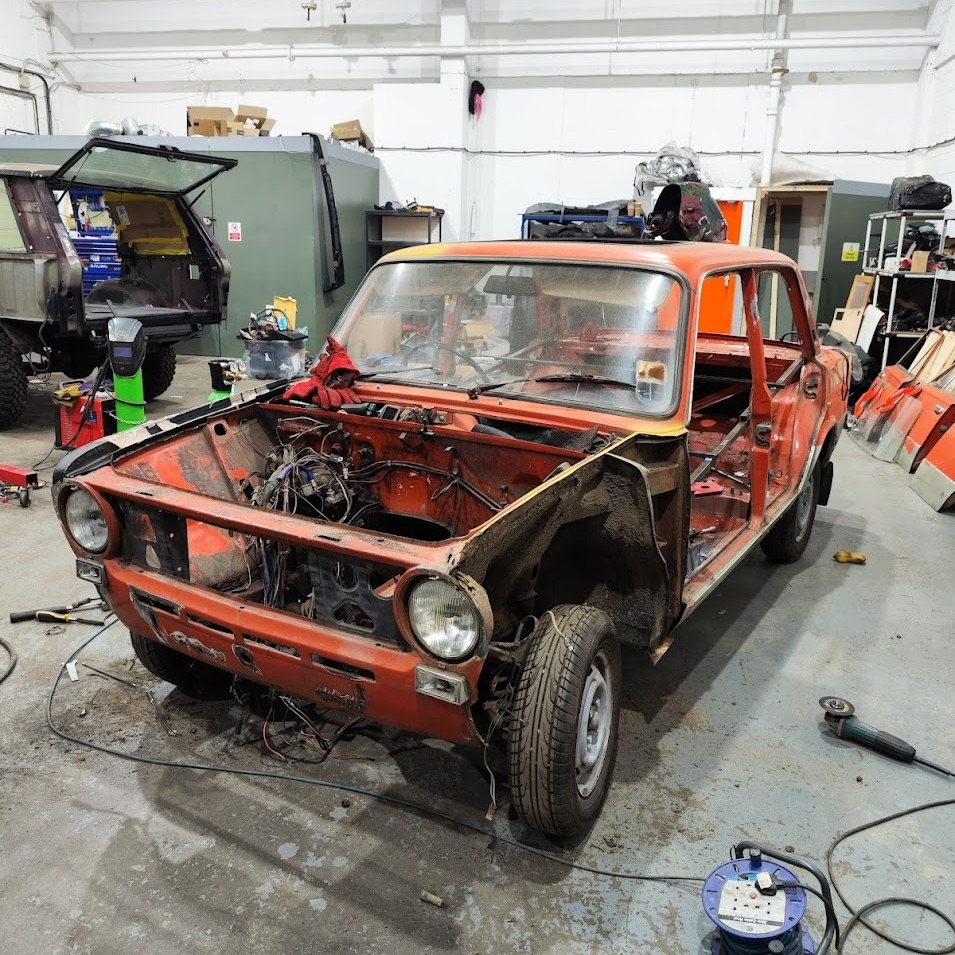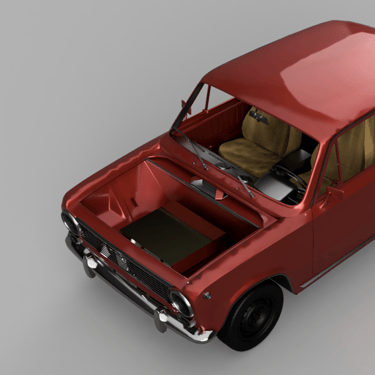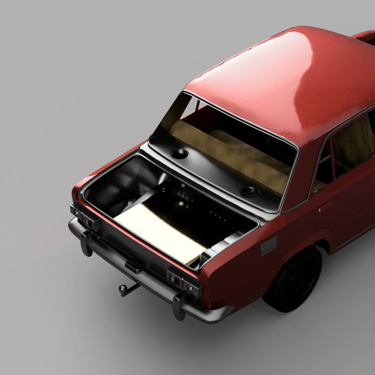The Lada 2101 EV Project – From Southend to the Future
Not every project is about customers — some are about pushing boundaries. We’re restoring two rare Lada 2101s, with one serving as a rolling test platform for VASS in-house developments. From custom ECU and BMS design to cooling strategies and compact integration, this quirky Soviet-era car is becoming our innovation lab. Every system tested here will later benefit customer conversions, making the Lada more than a classic — it’s a tool for the future.
Dmitrijs G.
9/2/20253 min read


Sometimes the most exciting projects start in the most unexpected places. For us at VASS, that project is a humble Lada 2101, discovered in Southend-on-Sea in somewhat running condition. On the surface, it’s just a quirky piece of Soviet motoring history. But for us, it’s much more: a platform to explore the limits of what’s possible in EV conversions and to test the next generation of in-house technologies.
Step One: Restoration
Before any electrification happens, this Lada will first be restored to its original glory. We want it to stand proudly as the charming classic it is, ready to be shown at car events and enjoyed as a true piece of automotive heritage. Only then will it begin its second life — as a rolling EV development platform.
The Vision for the EV Platform
The goal is not just to convert the Lada to electric power, but to use it as a testbed for VASS innovation. That means it will play host to our future developments in:
Controllers – ECU, BMS, and thermal management.
Air Conditioning systems – custom-designed and fully integrated.
Power electronics – from inverters to charging systems.
It won’t just be a show car — it will be a working laboratory on wheels.
Powertrain Challenges
Several motor options are on the table, including a Tesla Model S drive unit and a Tesla Model 3 Performance motor. But packaging is a major challenge. The Lada was built for a tiny 1.2L petrol engine — light, compact, and simple. To keep weight balanced and performance sensible, the most likely approach is to use only the motor itself, without the bulky Tesla gearbox or inverter.
That introduces a new engineering challenge:
Either a custom planetary gearbox to get the correct output speed.
Or a custom inverter, most likely built around a VW ID.3 powerstage with our own controller, allowing us to fine-tune performance and efficiency.
This decision is still in development, but the goal is to push boundaries while keeping the car safe and usable.
Battery System – The Biggest Hurdle
Batteries are where the Lada’s compact size becomes a real test. The small, light chassis means the pack must be carefully designed:
A single-box pack could limit capacity to around 25 kWh, which restricts range.
A split pack design would balance weight better, but complicates integration.
Initially, we considered options like splitting a VW ID.3 55 kWh pack. While practical, it lacks the power output and fast charging needed for our vision.
That changed when we discovered the Zeekr 001 “gold blade” cells. These are unlike standard NMC modules:
Nominal voltage: 3.2 V per cell (vs. 3.7 V).
Requires a 110s configuration for ~400 V (instead of the usual 96s).
Capacity: ~44 kWh.
Discharge: up to 16C (≈700 kW theoretical).
Charge: up to 5.5C (≈240 kW with proper cooling).
Numbers like these are unheard of in the classic EV world. They allow for lightning-fast charging and incredible power density — perfect for a future-proof development car.
A Custom BMS With CCS Integration
To make the most of these cells, we’re planning to develop a custom BMS with integrated CCS (Combined Charging System) support. The aim is not just to manage the pack safely, but to unlock the full potential of these high-performance cells. Features will include:
Support for the latest CCS protocols, including Plug & Charge.
Intelligent balancing and safety management.
High charge/discharge current handling to match the cells’ capability.
If successful, this system could set a new standard for classic car conversions as true daily drivers — with fast charging, long range, and no range anxiety.
Why It Matters
The Lada 2101 project may look modest compared to a Defender or Porsche, but it’s arguably one of our most ambitious builds. It’s not just about giving a classic a second life — it’s about proving what’s possible in EV conversions, testing the latest tech, and creating solutions that will benefit every future VASS project.
From Southend barn find to cutting-edge test platform, this little Lada is set to become a key part of our journey.
👉 Follow along as we restore it, electrify it, and push the boundaries of EV engineering.




VASS
Check out our Instagram
SUBSCRIBE TO OUR UPDATES
© 2025. All rights reserved.
